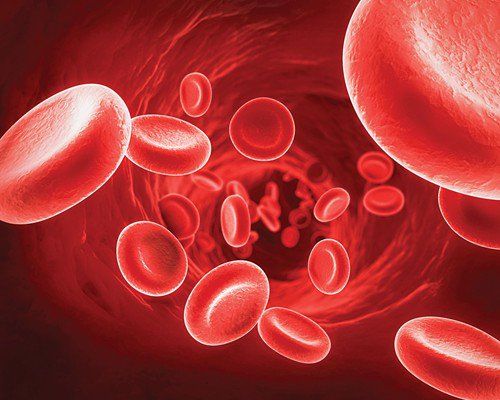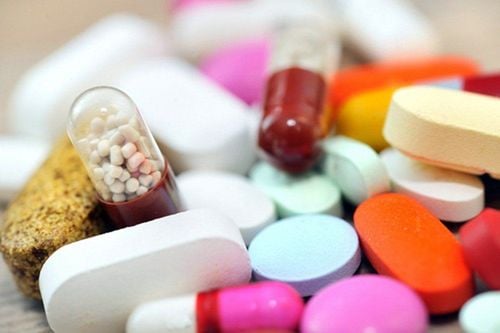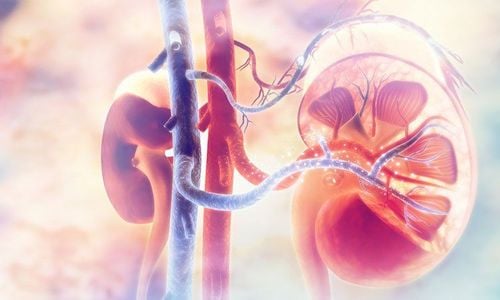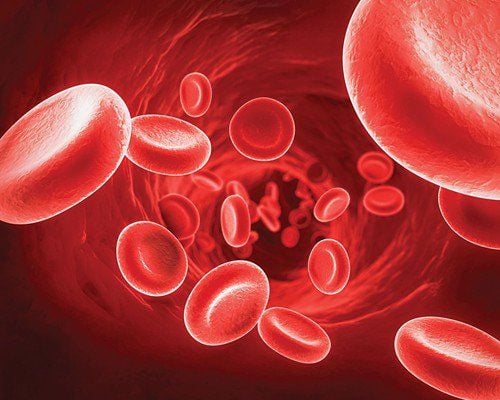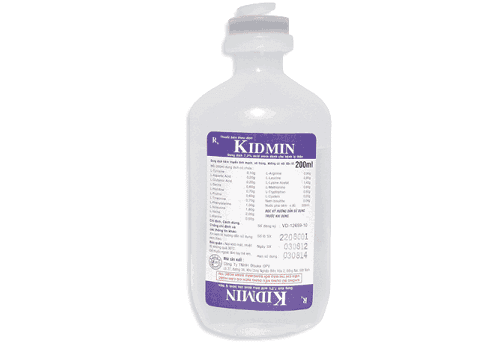This is an automatically translated article.
Dyskalemia is a common electrolyte disorder clinically causing many dangerous complications even death. There are many causes of dyskalemia.
1. The role of potassium in the body
Potassium is important for the function of nerve and muscle cells including the heart muscle. Potassium is involved in nerve impulse conduction, acid-base balance, enzyme activity and cell membrane function. Normal serum potassium levels usually maintain 3.5 - 5.2 mmol/L. A blood potassium level higher than 6.0 mmol/L or less than 2.5 mmol/L can cause dangerous disorders that require immediate treatment. The danger is that both hyperkalemia and hypokalemia can cause muscle weakness, flaccid paralysis, and lead to ion imbalance for neuromuscular tissue stimulation. Both of the above cases reduce the excitability and conduction capacity of the myocardium, potentially leading to cardiac arrest and cardiovascular collapse.
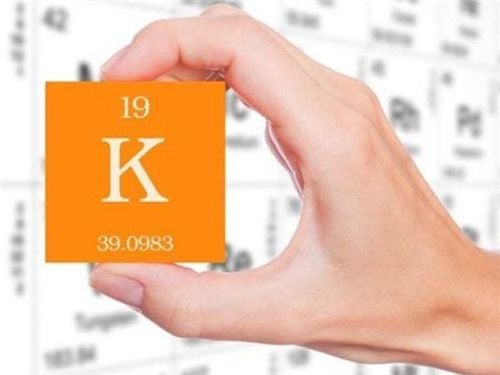
Khi nồng độ kali trong máu cao hay thấp cũng có thể gây ra các rối loạn nguy hiểm
2. Causes of dyskalemia
2.1. Hypokalemia
Mild hypokalemia when the serum potassium level is from 3 to 3.5 mmol/l. Moderate hypokalemia when blood potassium concentration is between 2.5 - 3.0 mmol/l. Severe hypokalemia occurs when the serum potassium level is less than 2.5 mmol/l. Cause
Gastrointestinal loss: diarrhea, excessive laxative use, intestinal fistula, bile leak, ileostomy fistula, profuse vomiting, gastric aspiration, blood alkaline. Loss through skin excretion: Excessive sweating beyond the body's ability to compensate can also cause hypokalemia. Loss of the urinary tract: loop diuretics (salt-eliminating diuretics), osmotic diuretics, renal tubular acidosis, some antibiotics, hyperaldosteronism, Fanconi's syndrome, excessive corticosteroid use, Bartter's syndrome . Insufficient potassium intake in the body: in cases of dieting, exhaustion or after surgery with inappropriate nutrition. Potassium moves from the extracellular to the intracellular: due to alkalization of the extracellular environment or the use of hypertonic glucose mixed with insulin to treat hyperkalemia. Clinical
Occurs when the concentration is < 3 - 3.5 mmol/l. Signs of neuromuscular disorders: paresthesia, weakness - myasthenia gravis, decreased tendon reflexes, paralytic ileus, constipation, sometimes diarrhea, or vomiting, uncontrolled vomiting. Cardiac and hemodynamic disturbances. Postural hypotension. Increased susceptibility to digitalis drugs. Electrocardiographic changes: low - flattened T wave, appearance of U wave, negative T wave - reversed, high sharp U wave, PR lengthening, low ST, grade atrioventricular block. Reduced glucose tolerance. Alkalosis makes cirrhotic patients easy to enter hepatic coma.

Một trong những nguyên nhân gây hạ kali là đổ mồ hôi, mất nước quá nhiều
2.2. Hyperkalemia
Mild hyperkalemia when > 5.5 - 6.0mmol/l Moderate hyperkalemia: 6.0 - 6.5 mmol/l Severe hyperkalemia when > 6.5mmol/l Raw Causes
Decreased renal excretion: Acute renal failure, acute exacerbation of chronic renal failure, Addison's syndrome, Renin deficiency syndrome, Aldosterone, salt-retaining diuretics, obstructive kidney disease. Redistribution of potassium from intracellular to extracellular fluid in: Acidosis. Overdose of drugs of the Digitalis group (Digoxin), insulin deficiency, rapid increase in extracellular fluid osmolality (due to high use of hypertonic Glucose, Mannitol 20%). The amount of potassium increases from exogenous sources: The diet and improper food intake contain a lot of potassium. Oral potassium tablets, intravenous potassium infusion, blood transfusion. Endogenous potassium is increased by tissue damage (hemolysis, rhabdomyolysis, after major surgery, gastrointestinal bleeding of varying degrees, compression trauma, acute embolism). Pseudohyperkalemia in some cases: Potassium released from coagulated blood samples has elevated white blood cells or platelets. Hemolysis or coagulation in blood samples. Garo extremities, garo vascular prolongation. In these cases, it is necessary to take a blood sample to check or use a blood gas test to check the potassium level in the blood to confirm the presence of a potassium disorder.
Clinical
Usually occurs when the blood potassium level is severe > 6.5 mmol/l; but sometimes in some cases symptoms appear very early when only mild increase. When blood potassium increases, it leads to interference with nerve conduction (Acetylcholine) leading to muscle paralysis, decreased tendon reflexes, cell edema, bradycardia, sudden cardiac arrest (ventricular fibrillation or asystole). Neuromuscular symptoms: paresthesia, muscle weakness, decreased reflexes, loss of reflexes, muscle paralysis. Cardiac symptoms: most occur when blood potassium levels rise above 8 mmol/l. Bradycardia, cardiac arrest due to ventricular fibrillation or asystole. Electrocardiogram disturbances: T wave is sharp, widening, ST short, P and R waves decrease in amplitude, PR prolongation, QRS widening, QT interval prolongation, no P wave is seen. Electrocardiogram changes It is clear when acidosis occurs, blood pH decreases, blood sodium concentration decreases, blood calcium decreases. The cases of blood potassium disorders, whether increased or decreased, can cause changes from mild to severe, affecting the health and life of the patient. It should be detected and adjusted by appropriate measures in a methodical manner and under the control of a doctor to ensure patient safety.
Vinmec International General Hospital is one of the hospitals that not only ensures professional quality with a team of leading medical doctors, modern equipment and technology, but also stands out for its examination and consultation services. comprehensive and professional medical consultation and treatment; civilized, polite, safe and sterile medical examination and treatment space. Customers when choosing to perform tests here can be completely assured of the accuracy of test results. In addition, customers will be examined with a specialist to determine the risk of disease and have a scientific treatment direction.
Customers can directly go to Vinmec Health system nationwide to visit or contact the hotline here for support.
MORE:
How much potassium is normal? Hypokalemia: Causes, symptoms, diagnosis and treatment Diagnosis and treatment of hyperkalemia




